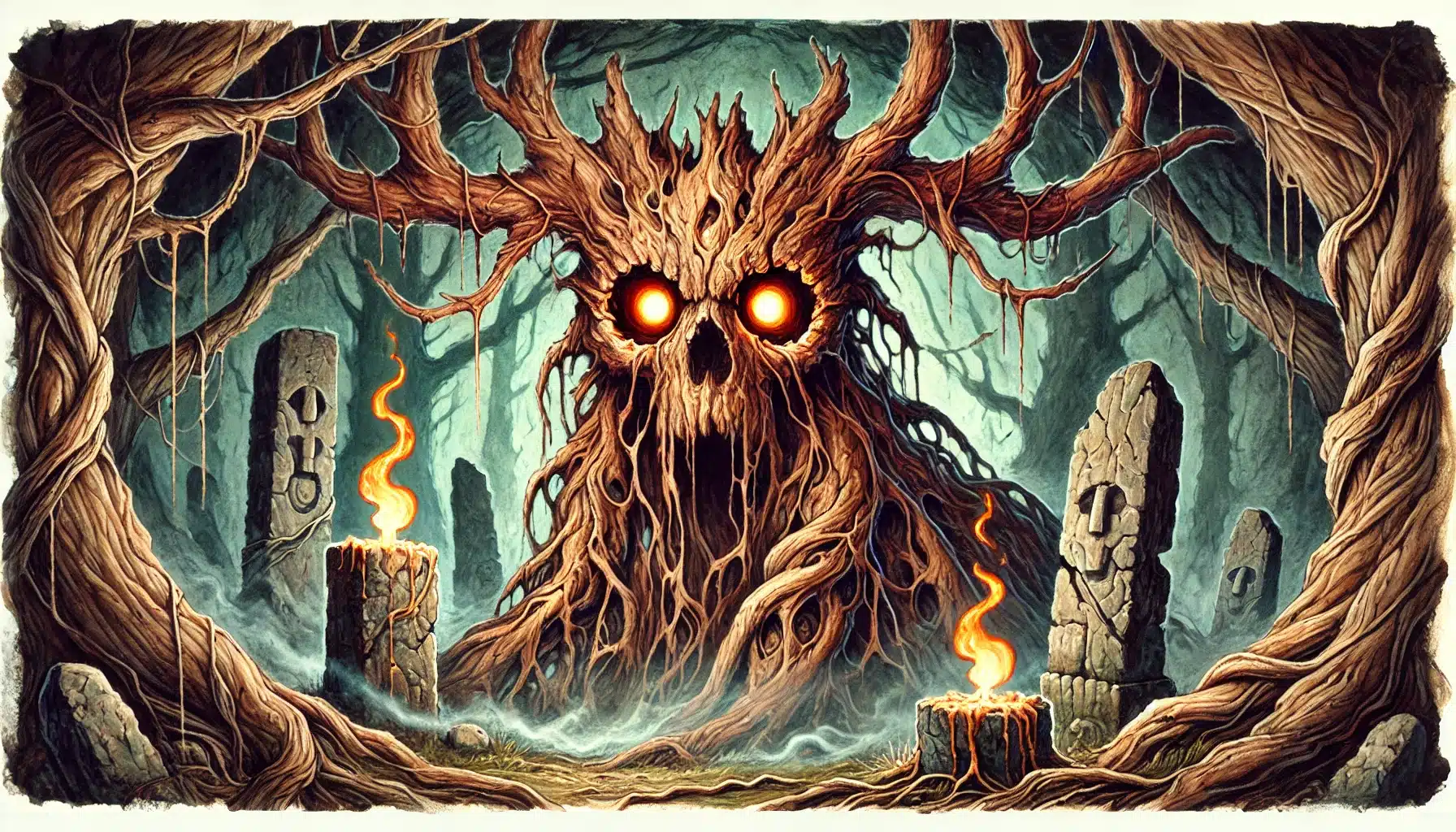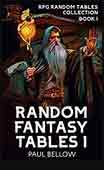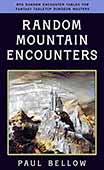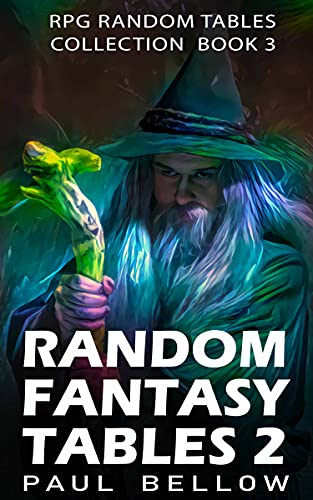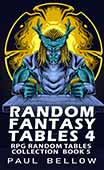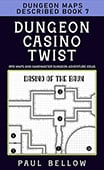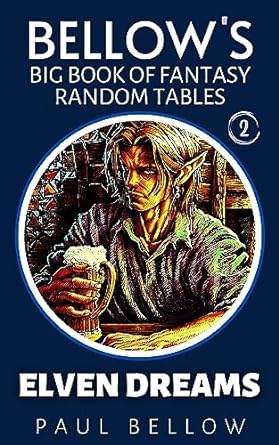Few thrills in tabletop roleplaying rival the magic of unleashing your own monster upon the unsuspecting party. In a world where even the most terrifying aboleths and beholders eventually become known quantities, nothing electrifies a session quite like homebrew horrors, fresh from the fevered mind of a Dungeon Master. Custom monsters aren’t just about shock value, though; they’re instruments of narrative, unique lore, and perfectly tailored threat. Whether you wish to inject new life into a stagnating campaign, challenge your players with never-before-seen mechanics, or simply indulge your creative urges. Good D&D homebrew monsters can renew the sense of the unknown.
Too often, guides and discussions frame monster design as the exclusive realm of veteran DMs with decades behind the screen. In truth, even first-time Dungeon Masters can craft memorable, terrifying, or awe-inspiring monsters if they have the right framework. A good design isn’t about encyclopedic rules mastery; it’s about merging story and system, dreaming up something compelling, and then fitting it into the beautiful chaos of Dungeons & Dragons.
At its heart, building a monster is like weaving a living tapestry. The process invites you to layer narrative weight atop mechanical challenge, blending evocative backstory, symbolic visuals, and rules-smart stats. The challenge isn’t just to create a sack of hit points with claws, but a creature that lingers in memory long after the dice have cooled. The monsters that truly shake a table don’t just attack bodies—they haunt imaginations.
This guide is your lantern in the dungeon: an exhaustive walkthrough, leaving no shadow unexplored. Each step is designed to usher you from first inspiration (“What is this thing?”) to final polish (“How will players remember it?”), ensuring that both mechanics and mythos work in harmony. Whether you’re crafting a one-session fright or an arc-defining villain, this process invites creativity at every turn.
So gather your sourcebooks, open your mind, and prepare to birth something original. The campaign’s next memorable adversary—a living piece of your world’s mythology—awaits construction. Let’s step boldly into the art and science of monster-making.
- Step 1: Conceptual Foundation
- Step 2: Lore, Myth, and Motivation
- Step 3: Physical Design and Aesthetic
- Step 4: Challenge Rating and Role
- Step 5: Stat Block Design
- Step 6: Special Abilities and Unique Mechanics
- Step 7: Legendary and Lair Actions (if applicable)
- Step 8: Encounter Design and Behavior
- Step 9: Balancing the Experience
- Step 10: Final Polish and Presentation
- Beyond the Basics: Variant Forms and Evolutions
- Sharing and Using Your Monster
- Final Thoughts on Monster Creation
Step 1: Conceptual Foundation
Every legendary monster begins as a flicker of inspiration—a concept that sets the tone for everything to follow. Before talents, stats, or even lore, ask yourself, what is the essence of this creature? Why will it haunt (or thrill) your adventurers? Is it a cryptic puzzle, a brutal juggernaut, a subtle mastermind, or an unpredictable anomaly?
Consider your campaign’s theme and tone. Does it need an elusive horror to elevate a story arc, or perhaps a sympathetic creature whose goals are at odds with the party’s? Is this monster a singular boss, a servant in a larger conspiracy, a local legend, or an arcane misfire? The narrative context shapes both your monster’s role and its lasting impact.
Try my AI Tabletop RPG generators...and an extensive library of content!
Look outward to worlds of inspiration. Myths, folklore, dark faerie tales, and pop culture brim with creatures, both terrifying and charming. Perhaps your monster draws from an ancient Greek tragedy, a chilling urban legend, or a cryptic dream. You may even be inspired by an unusual environment: the breathless silence of the deep sea, the tangled corridors of a fungal forest, or the haunted stillness of a ruined metropolis.
A rich concept not only guides mechanical design but lights a fire for storytelling. Here are prompts to spark your imagination:
Monster Concept Prompts:
- A cursed forest guardian who withers anything that asks for its aid
- A sentient plague that possesses dying creatures
- The failed experiment of an exiled celestial, searching for redemption
- A creature that slowly devours memories from its victims
- A living shadow, only visible in moonlight
- An undead beast bound by forgotten promises
- A clockwork automaton powered by trapped dreams
- The remnant of a city, embodied as a spirit made of fractured stone and metal
- A shapeshifter who forgets its true form
- The ancient hunger at the heart of the mountain
- A symbiotic entity offering boons at a terrible price
- An elemental echo born from a magical cataclysm
- A collector of souls, gathering those who break an unspoken taboo
- Mist that whispers fears and attacks when the party sleeps
- A tyrant worm that corrupts land as it burrows
- Golem fashioned from discarded weapons, each with a story
- The last of an extinct species, desperate and clever
- A familiar creature—owl, dog, frog—mutated beyond recognition
Let your concept drive both the narrative and the stats. The sensation of inevitability is vital; your monster should feel as though it has always belonged in your world, waiting for the party to discover it. With the right foundation, what follows flows naturally, fueling compelling abilities and unforgettable moments.
Above all, be specific. A monster that exists solely to be fought rarely inspires fear or fascination. Instead, anchor it in your campaign’s lived reality: give it purpose, history, and mystery, and you’ll craft an enemy your players will never forget.
⚔️ Fantasy RPG Random Tables Books
Make life as a Gamemaster easier…
If you play Dungeons & Dragons, Pathfinder, or other fantasy RPGs, this
RPG random tables series
is packed with encounters, NPCs, treasure, and more. Available in eBook or print—either way, you’ll have a wealth of adventure ideas at your fingertips.
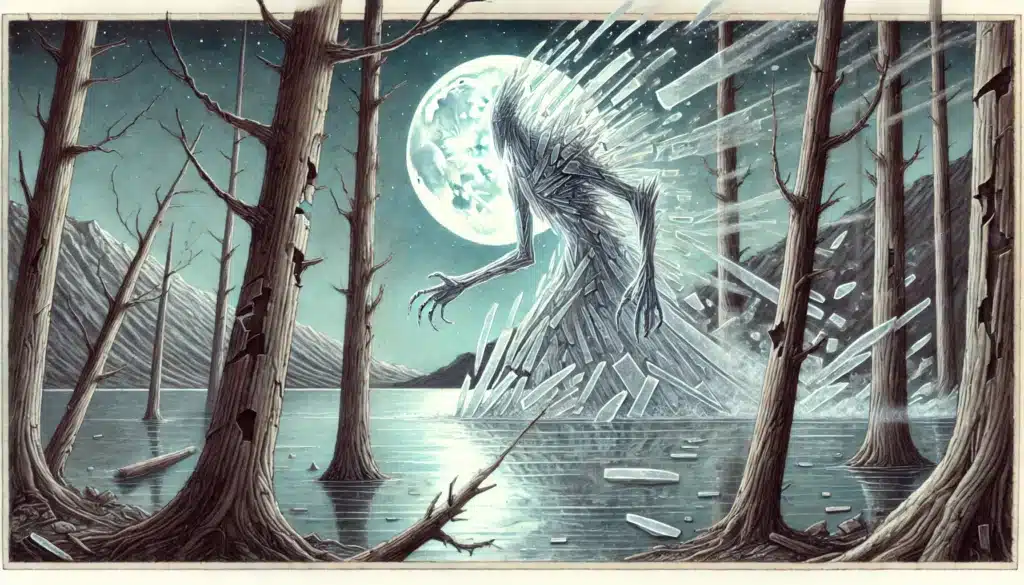
Step 2: Lore, Myth, and Motivation
A monster’s power isn’t measured merely by its stats, but by the story coiled at its heart. True suspense, fear, or awe comes from a sense of depth—soaring lore and tangled motivation. Before you pen a single ability, ask: what does this creature want? How did it come to exist? Is it the victim, the villain, or something heartbreakingly in-between?
Origin matters deeply. Was your monster summoned by hubris or accident? Is it a punishment woven by vengeful gods, or an artifact of evolution adapting to some magical crisis? A well-considered backstory weaves purpose into every decision. Monsters with ancient, whispered tales told in taverns or etched in forgotten ruins instantly feel more alive—and more dangerous.
Motivation shapes behavior. A creature that longs to return to its home plane fights differently than one seeking vengeance for betrayal. Even mindless beasts can have instincts that color their tactics—protecting a clutch of eggs, yearning for sunlight, or obsessively collecting stolen trinkets.
As you consider lore, let it infuse the monster’s abilities and encounter types. A spirit imprisoned for centuries might wield powers of chains and sealing magic. A parasite hates sunlight. A desperate, intelligent aberration might bargain or even parlay between attacks. Lore does not just explain what a monster does—it should shape how it does it.
Lore and Origin Prompts:
- Imprisoned in ancient times, now awakening
- Divine punishment for defying cosmic edicts
- Spawn of interdimensional misalignment or magical mutation
- Created as a weapon in a war long forgotten
- The personification of a village’s collective fear
- A pact gone awry, binding mortal and outsider
- Cursed by ancestral betrayal, seeking revenge or justice
- Bound to an artifact, gaining strength as it’s wielded
- Formed by the fusion of two rival spirits
- Guardian of knowledge, tasked to prevent intrusion
- Born from intense magical pollution or wild surges
- Offspring of a primordial entity, cast adrift
- The echo of a doomed civilization’s memories
- Reborn each night, dying with the sunrise
- Unfinished experiment, yearning for completion
Don’t mistake lore for fluff. Well-woven backstories add genuine emotional punch. When players uncover that their monstrous foe was once a tragic protector or has motives as tangled as their own, the encounter becomes unforgettable. Players may empathize, hesitate, or fear in unexpected ways.
Remember: monsters are more than obstacles. They are reflections of the world’s mysteries—reminders that every battle can be a story and every enemy, a legend waiting to be heard.
Step 3: Physical Design and Aesthetic
Before dice are rolled or initiative called, your players will picture the monster—and those first images burn themselves into memory. Physical design transforms a stat block into an encounter they’ll talk about for years. What does this creature look and sound like? How does it move? What details hint at its purpose or history?
Start with core anatomy. Does your monster have familiar animalistic elements, or is it an anthropomorphic fusion? Does it glide, slither, shamble, or hover? Think of iconic silhouettes: the eight eyes of a spider, the unblinking gaze of a basilisk, the armored shell of an ankheg. Anatomy informs threat and possibilities—how might it attack, pursue, or even retreat?
Consider the materials and textures of its form. Bone, smoke, writhing roots, heavy brass, soft petals—each creates a different physical mood. Does something about it seem “wrong” or out of place in its environment? Or is it hauntingly beautiful, with dangerous charm? A monster made of living vines will strike far differently than a chitinous horror or a dignified, glowing specter.
Movement and sound add further depth to the design. Shambling, skittering, floating or undulating—each movement crafts a different emotional response. Sound is the prelude to fear: a chime of bone, a clicking chorus of echoing voices, a chorus of whispered messages. Every sense can be weaponized.
Visual and Aesthetic Ideas:
- Eyes that never blink, glowing with intent
- Limbs made of indistinct smoke, reforming as needed
- Blood that sizzles and burns on contact
- Mouths that sing in perfect harmony, luring victims close
- Armor pulsing with veins and eerie bioluminescence
- Skin that changes color with emotion
- Wings made of glass, reflecting shattered memories
- Scales that shift to mimic nearby terrain
- Roots instead of feet, digging with every step
- Overlapping jaws, opening in impossible directions
- Feathers that shed ice or sparks
- A floating head encircled by orbiting runes
- Hands with too many joints, bending wrong ways
- A gaping wound, eternally fresh, never healing
- Antlers tangled with glowing fungi
- Chains embedded in flesh, dragging broken symbols
- A body wreathed in whirling mist or unnatural silence
Symbolic details and contrasts create instant intrigue. A gentle voice from a monstrous maw, haunting beauty paired with corrupting touch—these details invite players to guess at the monster’s story before a single action is taken. Let your design evoke as much mystery and emotion as its abilities.
⚔️ Fantasy RPG Random Tables Books
Make life as a Gamemaster easier…
If you play Dungeons & Dragons, Pathfinder, or other fantasy RPGs, this
RPG random tables series
is packed with encounters, NPCs, treasure, and more. Available in eBook or print—either way, you’ll have a wealth of adventure ideas at your fingertips.
Make every choice count. A good monster design is a visual riddle waiting to be solved—one that lingers longer in memory than anything printed on a stat sheet.

Step 4: Challenge Rating and Role
The cruelest trick in monster design is making a creature that’s either trivially easy or relentlessly overwhelming. Landing the challenge sweet spot means blending flavor with mechanical precision. Start by deciding what function your monster serves in combat: is it a brutal bruiser, a clever controller, a nimble striker, or a tricky support? This tactical role should fit both the narrative and the group’s capabilities.
Dungeons & Dragons provides Challenge Rating (CR) guidelines as benchmarks, but these are best viewed as recommendations, not immutable truths. CR should approximate how tough a monster is for a given party, considering offense, defense, and signature abilities. Remember: solo bosses need durability, mobs want impact in numbers, and special mechanics can skew difficulty fast.
The context of the encounter matters as much as the stat block. Is this monster a lone boss meant to test every aspect of a party, or part of a cunning pack? Does it hound weakened adventurers deep underground, or ambush them in their element? Environment, allies, and timing all affect the “real” challenge far more than any single number.
Never let calculators do all the work. While CR offers a starting point, playtesting and DM intuition remain key. Test your monster in isolated fights, compare it to official options, and ask: does it pressure players the way you want it to? Are its tricks clear and fair, or likely to frustrate? Use the tools—but trust your gut.
Monster Challenge Table
| CR | Intended Role | Encounter Type | Party Level Range |
|---|---|---|---|
| 1 | Striker | Mob | 1-3 |
| 2 | Controller | Minion, Mob | 1-3 |
| 3 | Support | Elite, Mob | 2-4 |
| 5 | Solo Boss | Single, Elite | 3-6 |
| 7 | Tank | Boss, Mob | 5-8 |
| 9 | Controller | Boss | 7-10 |
| 11 | Striker | Elite, Boss | 9-12 |
| 13 | Support | Boss, Group | 11-14 |
| 15 | Tank/Controller | Solo Boss | 13-16 |
| 17 | Mythic Boss | Single, Epic | 15-18 |
| 19 | Controller | Boss | 17-20 |
| 21+ | Mythic/Legend | Solo, Epic | 19-20+ |
Crunch the numbers, but never let them entirely dictate the experience. If a monster seems vastly deadlier (or softer) in play, scale accordingly. Sometimes a single ability or battlefield quirk matters more than the raw CR.
The best lessons come at the table. No matter what the spreadsheet says, true balance emerges when dice and imaginations collide.
Step 5: Stat Block Design
Stats are the backbone of your monster—the mathematical heart that pumps life (or unlife) into your concept. Each number and feature shapes not just survival, but playstyle and threat. Start with the basics: HP, AC, main ability scores, speeds, and senses. These choices tune the difficulty and feel of every encounter.
Decide how resilient or fragile you want your creature. High HP and AC make for grinding battles, while glass cannons die fast but strike hard. Ability scores reinforce flavor: does the monster rely on brute force, razor wit, unsettling speed, or unearthly intellect? Sometimes, a low ability can be just as fun—a brilliant manipulator with brittle bones, a bulky brute with laughable wits.
Movement types open tactical depth. Does it slither through walls, leap impossible distances, or flicker between shadows? Adding hover, burrow, climb, or swim speeds reshapes how players must approach the fight. Think also about senses—darkvision, tremorsense, blindsight—these dictate both how the monster hunts and how it might be avoided.
Add thematic twists. Maybe the monster is resistant to certain attacks only in darkness, or gains advantage on stealth checks when surrounded by fog. Conditional resistances, variable perception, or environmental triggers can take basic stats and imbue them with real personality.
Stat Block Design Tips:
- Use odd movement types (hover, teleport, burrow) to confound expectations
- Curve HP higher for solo bosses, lower for glass cannon strikers
- Let AC fluctuate based on environmental factors or behaviors
- Pair low INT with basic tactics; high INT with multi-layered plans
- Set perception range to react to specific cues (light, sound, type of magic)
- Senses tied to environmental triggers (scent in water, sight in starlight)
- Give disadvantage on certain saving throws to spotlight a weakness
- Where fitting, grant conditional resistances (immune to fire, but vulnerable when cold)
- Movement speed varies based on injuries or emotional state
- Add climb, swim, or burrow speeds for ambush predators
- HP regeneration under precise conditions (moonlight, feeding, certain terrain)
- Imposing speed forces positioning; limited speed pushes ranged tactics
- Allow for variable initiative (bonus for each enemy or after a kill)
The goal isn’t just statistical balance, but narrative reinforcement. A monster meant to harry in darkness should see in the dark and move silently, while a hulking guardian ought to shrug off smaller blows. Don’t forget to align stats with story: make every number an extension of lore and theme.
Try my AI Tabletop RPG generators...and an extensive library of content!
When you marry mechanics and flavor, your custom monster transcends “numbers on a page” and becomes a truly immersive threat.
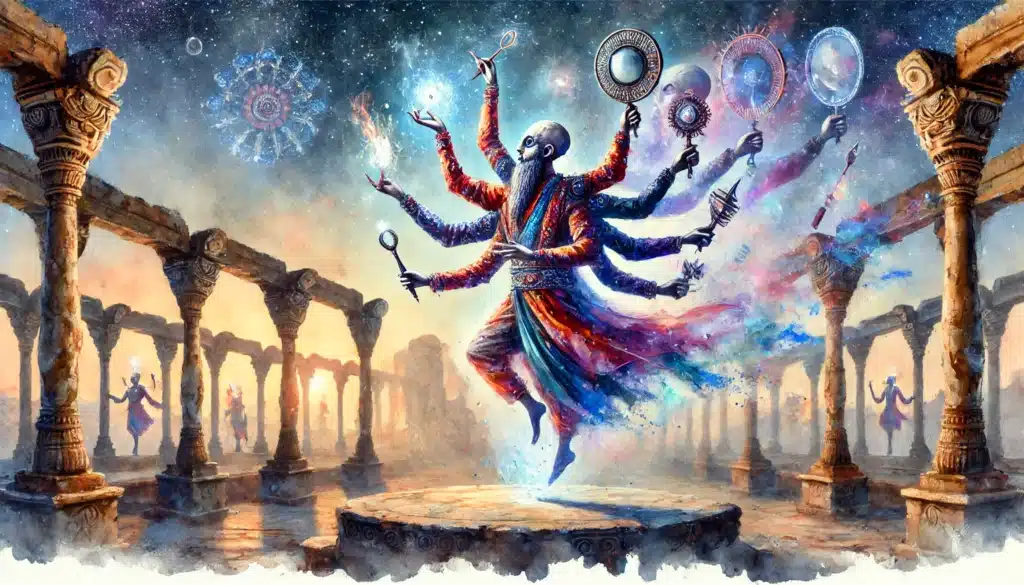
Step 6: Special Abilities and Unique Mechanics
Signature abilities are the lifeblood of a memorable monster. They define not just how a creature fights, but how it challenges and interacts with the party’s tactics. A monster’s claws and teeth might scare the players’ characters, but it’s the moment when the creature steals memories or teleports through the party’s shadows that makes jaws drop.
Begin by considering what makes your monster unique in both combat and narrative. Does it wield elemental power? Can it twist perception, or punish hubris? How does it interact with terrain, fear, or the party’s own abilities? Killer mechanics are not just about raw numbers—they reshape the battlefield or force heroics from the party.
Include a mix of effects: direct damage, status conditions, changes to the environment, and narrative hooks that might recur later in the story. Surprising abilities force adaptation, while thematic powers reinforce your monster’s lore. Never add complexity for complexity’s sake—choose abilities that fit seamlessly into your creature’s core concept.
Think beyond damage. Some of the scariest monsters never even land a killing blow—they leave the party shaken, marked, or changed. Your monster’s mechanics should tell a story as vivid as its appearance.
Special Ability Ideas:
- Steals a recently cast spell from a spellcaster
- Gains power from the fear or pain of its enemies, growing stronger each round
- Can only be harmed while a specific truth is spoken aloud
- Teleports between shadows cast by living creatures
- Projects illusions that mask its true location or form
- Plants parasitic seeds that erupt after several turns
- Absorbs elemental damage to heal or gain new attacks
- Causes environmental hazards (collapsing floor, hissing fog) with movement
- Drains memories, causing Intelligence or Wisdom damage
- Unleashes psychic pulse that stuns or disorients
- Shapeshifts to mimic an ally mid-fight, sowing confusion
- Spreads a magical disease with every attack
- Exhales a mist that ages victims or accelerates time
- Silences all sound nearby, blocking verbal spells and calls for help
- Marks enemies with a spectral brand—summons them later, or saps HP over time
- Gains resistance to the last damage type used against it
- Summons terrain obstacles (roots, webs, spectral chains)
When building abilities, always tie them to the monster’s narrative. A creature cursed to exist between worlds might phase through attacks or briefly vanish. A spiteful spirit could inflict emotional scars more terrifying than mere wounds.
Stay focused. Too many mechanics muddle the encounter; two or three signature abilities will keep the party invested and the action tense without overwhelming the table.
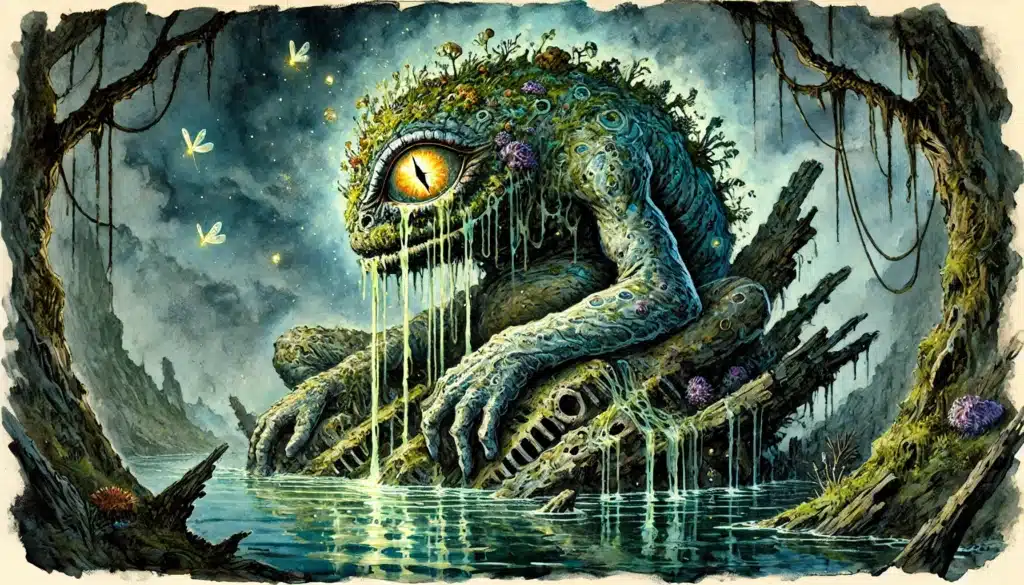
Step 7: Legendary and Lair Actions (if applicable)
For boss-level threats, regular turns rarely suffice. Legendary and lair actions empower monsters to reshape the battle, act between player turns, and turn static encounters into pulse-pounding spectacles. Legendary actions give monsters extra agency and are typically used at the end of other creatures’ turns. Lair actions tap into the environment’s magical resonance, affecting the battlefield on initiative count 20.
Legendary actions ensure your big bads stay dangerous even when outnumbered. Use them for iconic moves, repositioning, or punishing careless tactics. Mythic (or phase-based) designs can push things even further, unveiling fresh powers in later rounds or as the monster “transforms” under pressure.
Lair actions connect monster to location, turning the very ground or walls into extensions of its will. Traps spring suddenly, spectral helpers arrive, or the atmosphere itself saps strength from the party. These actions lift the fight beyond trading damage—they force players to strategize, adapt, and respect the lair as another enemy.
Balance is crucial. Legendary and lair actions should raise stakes, not trample hope. Each one should enhance tension and drama, not create frustration or helplessness.
Legendary & Lair Action Ideas:
- Summon illusory duplicates to block attacks or sow confusion
- Reshape the battlefield—raise walls, collapse terrain, or spawn magical hazards
- Force involuntary movement—pulling a PC into a trap or out of position
- Alter initiative order for a round, scrambling party tactics
- Cause equipment or magic to malfunction temporarily
- Drain light or color, imposing disadvantage or limiting vision
- Summon spirits or minions for a single round
- Trigger environmental effects—acid rains, falling debris, exploding lanterns
- Amp up existing minions with magical enhancements
- Interrupt spellcasting or counter a spell as a reaction
- Unleash a psychic scream, making saving throws harder until next round
Never let these features become routine. Legendary and lair actions should be carefully chosen to fit lore, keep the pacing crackling, and push players to shine. One or two per round is usually enough—a relentless boss drains drama faster than a slow burn.
Embrace restraint. You want your climactic battle to be tense and memorable, not a slog of endless abilities. Let each action elevate both monster and story.
⚔️ Fantasy RPG Random Tables Books
Make life as a Gamemaster easier…
If you play Dungeons & Dragons, Pathfinder, or other fantasy RPGs, this
RPG random tables series
is packed with encounters, NPCs, treasure, and more. Available in eBook or print—either way, you’ll have a wealth of adventure ideas at your fingertips.
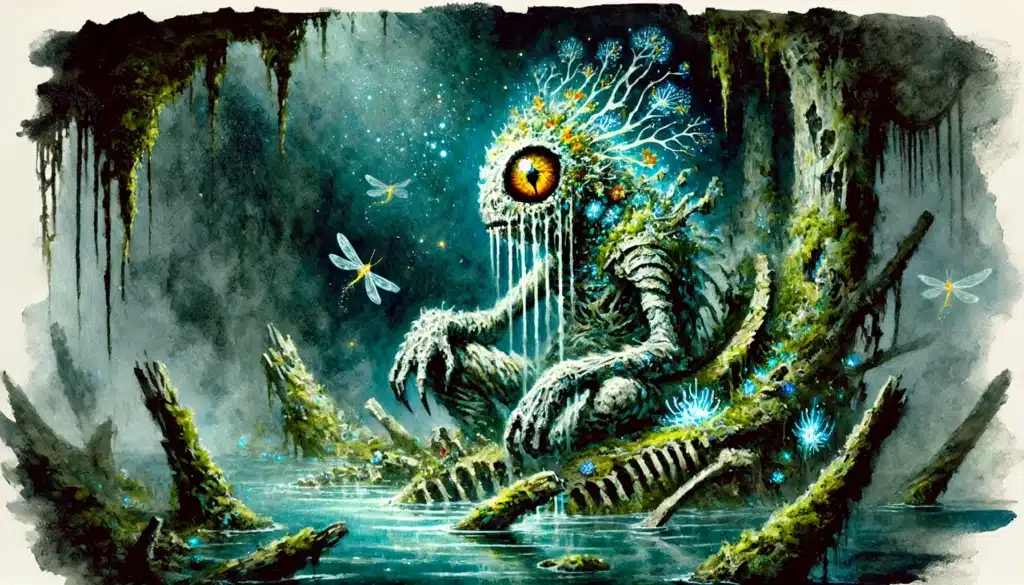
Step 8: Encounter Design and Behavior
A monster is only as memorable as the scene in which it’s encountered. Placement, terrain, and encounter objectives all shape whether a fight is forgotten or legend. Where does your monster hunt, hide, or brood? Is it alone, or does it command minions? Are the players meant to defeat, evade, delay, or even bargain with it?
Design the battlefield as part of the challenge. Is the ground treacherous, the air thick with fog, or the space so confining it forces new tactics? Allies can shift the monster’s risk and reward calculus, while environmental features (collapsing bridges, drowning pools, arcane traps) become integral to the fight.
Rethink objectives. Sometimes the goal isn’t simply “kill the monster.” Maybe the party must escape, disrupt a ritual, retrieve an item, or survive a set number of rounds. Puzzle-combat hybrids, time pressure, or even moral dilemmas force players to approach the monster with more than sword and spell.
Tactics and behavior should always tie to lore. An ambush predator uses hit-and-run strikes, retreating when bloodied. A noble guardian issues challenges and targets trespassers while ignoring those who flee. Moods and goals change the entire texture of a D&D random encounter.
Encounter Styles:
- Ambush in a dream or astral realm
- Duel on a collapsing bridge or narrow cliff
- Interrupting a summoning or sacrificial ritual
- Nighttime raid in an isolated village or camp
- Chase through tangled ruins or underground tunnels
- Multi-floor tower fight with shifting elevations
- Ambush in a fog-drenched maze
- Silent standoff in a library of forbidden tomes
- Timed escape as terrain floods/collapses
- Multi-stage fight: new hazards or forms at each stage
- Puzzle-combat hybrid: deactivate runes, then attack
- Battle under a magical phenomenon (meteor shower, planar breach)
- Siege encounter with waves of minions, then boss
- Social manipulation: must “defeat” by exposing a truth
Remember, the “where” and “how” shapes every memory. Describe sensory details—smells, echoes, shifting shadows—to ground the players in the space. Let the environment echo the monster’s story or powers: a fire spirit battles in a crumbling foundry, a mind parasite stalks amid illusions.
Encounters are more than numbers. The stage and script you set will elevate your monster from a stat block to a legend.
Step 9: Balancing the Experience
Even the best-laid plans can lead to surprise—perhaps your monster proves too fragile, or nearly wipes the table with a single lucky round. Balancing encounters is as much art as math. Begin by running dry runs: one-on-one fights against a level-equivalent PC, or solo skirmish simulations with modified parties. These let you test both mechanics and pacing before the real show.
Keep adjustment tools handy at your table. Sometimes, a fight tips too far or falls flat. Adjust HP, tweak damage, or withhold a signature ability for a round or two if needed. Small, subtle changes can rescue a session without breaking immersion.
Watch for signals during gameplay. Are players consistently stymied by one mechanic? Does the monster draw all fire, or is it ignored? Adjust targeting, rotate through abilities, or offer tactical hints via environmental clues. Flexible balancing ensures fun, challenge, and tension remain high.
Never be afraid to revise after a session. Feedback from your party—both their cheers and grumbles—helps you refine future monsters. Monster design, like any craft, improves with each experiment.
Balancing Tips:
- Limit multi-target effects; avoid overwhelming with AoE each round
- Adjust initiative position to mitigate “alpha strike” problems
- Provide a visible “tell” before using big abilities
- Stagger signature powers, using them on timers or conditionals
- Offer in-fight healing or shields, but never both
- Alternate between offensive and defensive actions
- Grant monsters a weakness players can discover and exploit
- Resist the urge to “punish” clever play—reward it instead
- Make legendary actions cost real resources or triggers
- Scale HP or resistances based on party’s actual output
- Use minions to divert attention, not just increase numbers
- Don’t let stuns/dominates lock out players for long stretches
Balance is not perfection—it’s a dance between pressure and fun. A monster that nearly kills the party but feels “fair” is often far more memorable than a perfectly balanced, but unexciting, stat block. Give your players moments to shine, and yourself freedom to adapt as the dice demand.
Ultimately, the best monsters are those that push players to think, strategize, and cheer when the final blow lands.
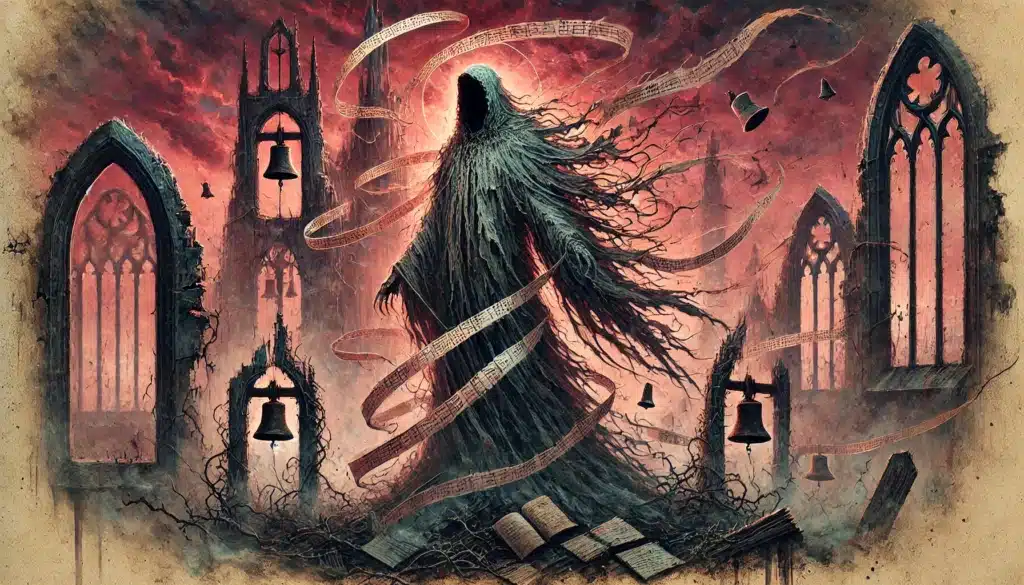
Step 10: Final Polish and Presentation
Your monster is nearly ready to step into the light. Now comes the step that makes it sing at the table: polish and presentation. A well-formatted stat block, evocative player description, and the right visual cues transform your creation from strong to spectacular.
First, refine the stat block for clarity and readability. Follow official formatting as closely as possible—bold for key terms, italics for conditions, organized sections for clarity. Summarize at-a-glance abilities and actions to keep the game flowing smoothly.
Provide a player-facing introduction. Write a vivid few lines describing the monster’s first impression upon encounter—how it sounds, smells, or moves, and what details leap out. This simple script builds mood and immersion from the first moment.
Prep visual aids if possible. Even a quick sketch, color reference, or homemade token brings your monster to life. Printable reference cards, digital art, or stand-ins make every encounter more memorable.
Final Prep Steps:
- Choose a distinctive, setting-appropriate name
- Format ability text to match official entries (bold/italics, summaries)
- Pre-roll initiative before the session for smooth play
- Write a dramatic “encounter intro” line or monologue
- Prepare printable stat block or DM reference cards
- Note tactical cues in the margin (“uses terrain here,” etc.)
- Double-check for rules synergies or contradictions
- Include lore or rumor handouts for players to discover
- Create/find appropriate mini, token, or art
- Summarize legendary/lair actions on a separate card if needed
- Attach sample loot or aftermath consequences
- Prepare alternative reactions or escalation plans for the monster
Take pride in your creation. You’ve summoned something wholly original—an encounter that didn’t exist until you willed it into being. This monster is now as much a part of your world’s mythology as any entry in the Monster Manual.
Let it off the leash. Give it room to breathe, to scare, to delight, and most of all, to surprise your table.
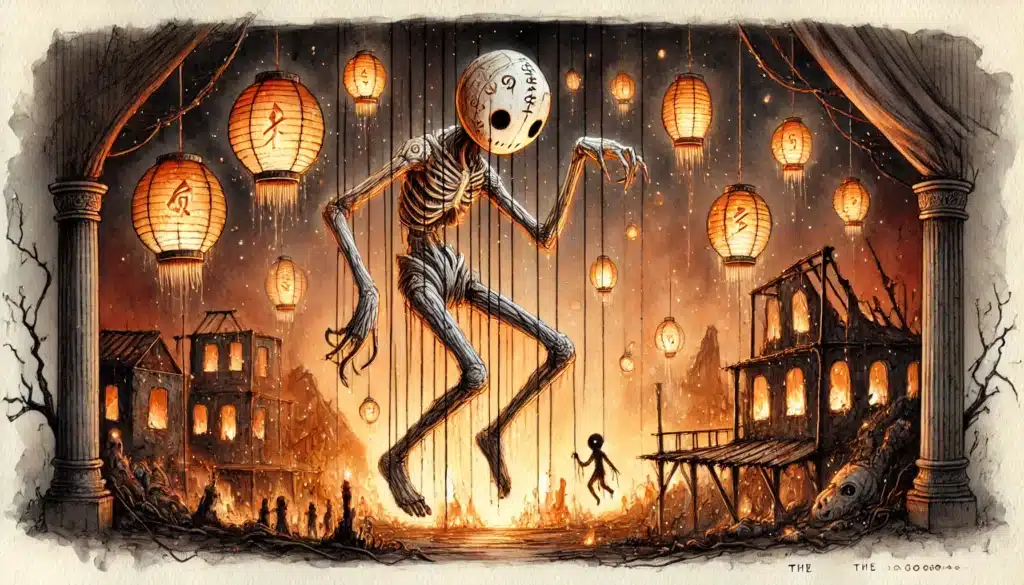
Beyond the Basics: Variant Forms and Evolutions
No truly iconic monster emerges only once. The best foes evolve, adapt, and recur in surprising forms across a campaign. Consider building alternate versions tailored to changing environments, shifting party strength, or evolving storylines. These variants keep the threat fresh and provide ongoing narrative hooks.
Regional adaptations let familiar threats take on new, unsettling aspects. Maybe a monster first encountered in the frosted mountains now reappears, twisted by the curse of a haunted bog. Cultural overlays can add ritual scars, talismans, or altered behaviors, tying the creature deeper into the world’s setting.
Sometimes, monsters literally transform—shedding previous forms to become something more dangerous or mythic. These evolutions let you raise the stakes and tie a recurring enemy into the campaign’s rising tension.
Recurring monsters, in any form, become legends—beloved and feared in equal measure. They grow with your world and your players.
Thematic Variants and Regional Mutations
Breathing new life into a monster is as simple as asking how it would change in a different climate, under new magical pressures, or in the shadow of a unique civilization. Reskinning “official” monsters is a time-honored tradition, but homebrew monsters can benefit just as much.
Regional changes alter not only appearance and abilities, but also tactics and weaknesses. Let local folklore inspire minor or major mutations: perhaps a monster in the desert gains sand manipulation, while its forest-dwelling cousin weaves branching illusions. These tweaks keep encounters unpredictable, even against a “known” threat.
Variants can also mirror the campaign’s evolving themes. A corrupted guardian transforms as the party reshapes the land, growing more desperate or cunning. A parasite learns to resist old tricks, demanding new strategies from heroes each time it reappears.
⚔️ Fantasy RPG Random Tables Books
Make life as a Gamemaster easier…
If you play Dungeons & Dragons, Pathfinder, or other fantasy RPGs, this
RPG random tables series
is packed with encounters, NPCs, treasure, and more. Available in eBook or print—either way, you’ll have a wealth of adventure ideas at your fingertips.
Never be afraid to let your creations “grow up” with the campaign. A trail of lesser forms can foreshadow the arrival of an apex predator, or mutated spawn can hint at the approach of a true horror.
Variant Ideas:
- Desert version: molten sand attacks, burrowing ambush
- Tundra version: freezes enemies, blends into blizzards
- Haunted forest: ethereal limbs, voice mimicry
- Volcanic: erupts on death, immune to fire, spews magma
- Urban: manipulates machinery, vanishes through sewer grates
- Swamp: leaves poisonous trails, commands swarms
- Arctic: bites numb flesh, shrouds area in blinding snow
- Deep sea: ensnares with tentacles, generates illusions from bioluminescence
- Mountainous: shatters stone, causes avalanches
- Feywild: charming aura, unpredictable teleportation
- Shadowfell: drains hope, attacks through reflections
- Celestial: radiant shield, seeks to redeem or judge
- Underdark: emits toxic spores, senses through vibrations
Adaptability is key. A monster that evolves both visually and mechanically can recur in many forms—each more surprising and dangerous than the last.
Let these variant forms become warnings to heroes, and markers of how deep the campaign’s danger truly runs.
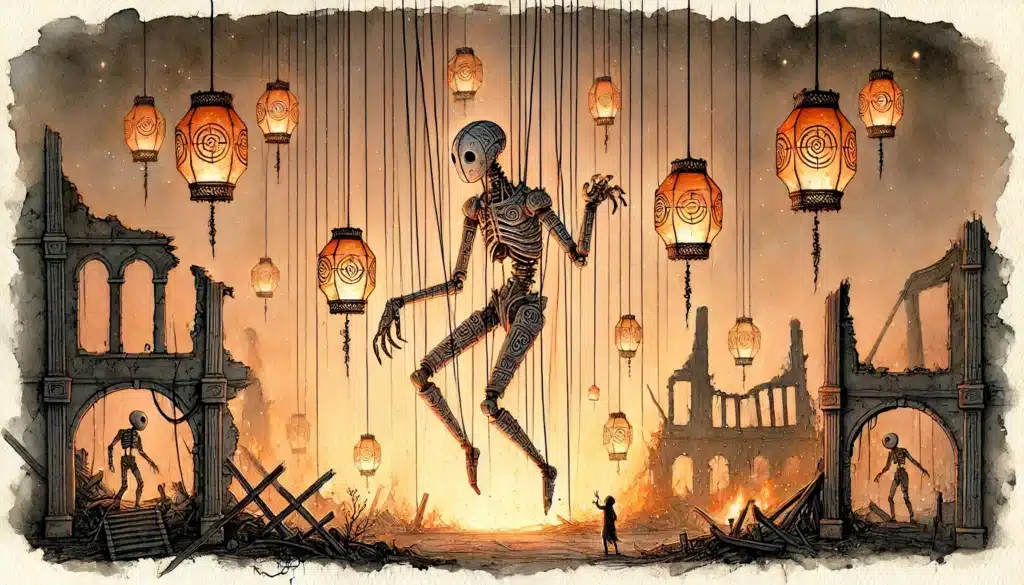
Mythic or Ascended Versions
Every great monster deserves a place in legend. Mythic or ascended forms transform an already formidable foe into an epic, campaign-defining adversary. These legendary versions may gain new shapes, entirely fresh mechanics, or even narrative triggers that alter the battlefield in real time.
Mythic forms thrive in high-level play, where players expect wild swings and larger-than-life drama. Consider phase shifts: once defeated, a monster rises anew, altered by rage, pain, or the breaking of a long-standing magical seal. Powerful monsters might bind the souls of fallen heroes, summon avatars of their past victims, or reshape reality itself in their final moments.
Be bold with mechanics, but always tie these powers to the underlying story. A mythic monster should evolve not just to keep up with the party, but because of some thematic catalyst—revenge, prophecy, broken pacts, or desperate defense.
These epic iterations mark milestones in the campaign, giving players the chance to face not just a monster, but a legend in the making.
Mythic Mechanics:
- Split-second resurrection with a new suite of abilities
- Alternate forms/phases triggered at specific HP thresholds
- Battlefield-wide effects tied to the monster’s lore (e.g., all healing transformed into fire damage during phase 2)
- Soul-binding attacks—fallen players must defeat the monster inside a dream
- Reality warps: change terrain, summon avatars, alter gravity
- Time distortion—forces entire table to act in slow-motion or at increased frequency
- Mythic recharge: signature abilities become limitless for a turn
- Narrative-powered vulnerabilities—can only be defeated by an artifact or during a prophetic event
- Absorbs defeated minions or environmental hazards to fuel self-healing
- Summons storms, earthquakes, or planar tears as mythic effects
Used thoughtfully, mythic evolutions don’t just raise difficulty—they transform a monster from fearsome foe into campaign-defining legend.
Let your recurring enemy “ascend” through victories, losses, or the fulfillment of ancient prophecies. These mythic threats become the very stuff of your campaign’s history.
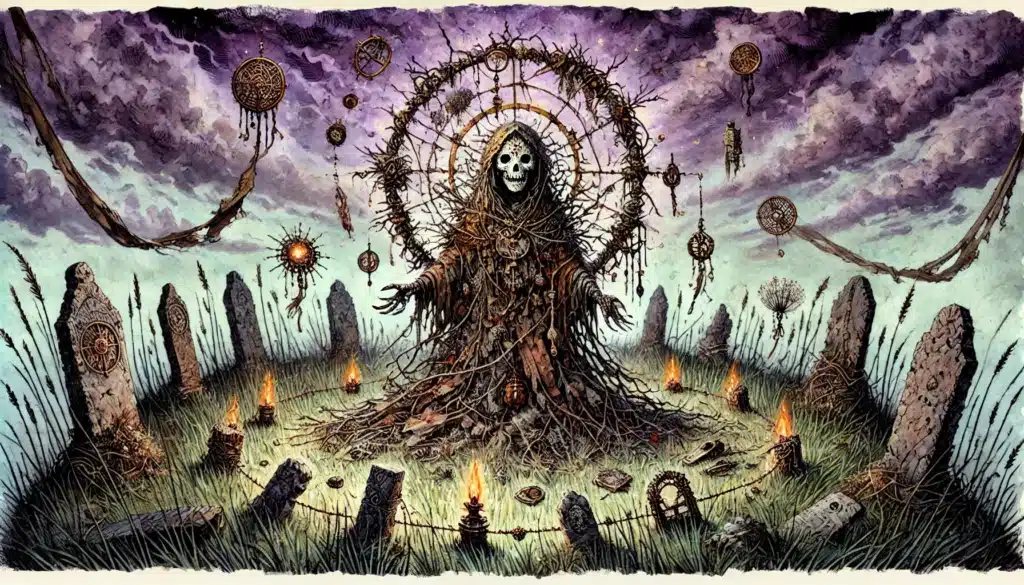
Sharing and Using Your Monster
After all your work, there’s real joy in letting others glimpse, play, or battle your creation. Whether you share it with the public as homebrew content, circulate among friends, or adapt it for an upcoming published adventure, your vision now enters the greater tapestry of D&D.
Careful presentation is key. Documentation, tables, evocative lore blurbs, and formatted stat blocks can help others run your monster smoothly and creatively. Provide notes on scaling, context, and potential encounter seeds for best results.
The right tools and platforms bridge your monster from private homebrew to shared legend. There are countless communities—online and offline—ready to test, tweak, and celebrate new monsters. Your creation might become another table’s favorite foe.
Writing for Others
If you plan to share your monster with the world, make it accessible, polished, and inspiring. Name matters—choose something memorable and fitting for your world’s tone. Write a lore intro that sets the scene and offers a hook. Offer clear formatting, with distinctive sections for abilities, tactics, and narrative advice.
Document how your monster can fit into a variety of campaigns, or provide sample scenarios for reference. If possible, tag your creation by challenge and intended party level. Community standards (such as OGL or SRD compatibility) can help ensure your work is easily adopted.
Packaging Tips:
- Start with an evocative name and a 2-3 sentence lore intro
- Include sample encounters or hooks for inspiration
- Format stat blocks in official style for readability
- Highlight signature abilities and tactical notes
- Label recommended party level and encounter type
- Add printer-friendly versions and digital tokens
- Attach notes on variant forms or evolutions
- Offer advice for scaling CR or swapping abilities
- Link to rules reference (SRD/official mechanics where possible)
- Provide a glossary for custom mechanics or conditions
- Tag by campaign theme or monster type (aberration, undead, etc.)
Don’t let your monster languish in a folder. Publishing on DMsGuild, Reddit, or a personal site can bring it to tables across the world.
When you share your homebrew, you join a living tradition of community myth-making.
Integrating Seamlessly Into Campaigns
No matter how impressive your monster, it falters if just dropped in for a random fight. The best adversaries are layered into your world before the first initiative roll—through rumors, signs, and mounting anticipation. Carefully foreshadow its presence, and align the encounter with your campaign’s themes.
Teasing the monster’s arrival heightens tension and interlocks with the adventure’s stakes. Use NPC stories, small-scale attacks, or strange environmental clues to prepare the party. Mutated lesser versions can act as “scouts,” allowing higher-level forms or the main boss to remain a lurking threat.
Try my AI Tabletop RPG generators...and an extensive library of content!
Tying the monster into the campaign’s arc—through prophecy, history, or personal quests—keeps it feeling meaningful, not arbitrary. The table’s emotional investment soars when they finally face the adversary they’ve heard whispered for sessions.
Integration Strategies:
- Ancient murals depicting the monster’s deeds or fate
- Tavern songs and stories with exaggerated, ominous details
- NPC warnings, local legends, or fever-dream omens
- Victims or survivors marked by the creature’s touch
- Magic items or relics bearing the monster’s sigil
- Environmental clues—unusual tracks, altered weather, warped wildlife
- Bardic riddles or cryptic prophecies
- Nightmares or visions haunting a PC before the encounter
- Mysteriously mutated creatures acting as lesser agents
- Sudden failures of magic/technology near the anticipated area
- Whispered rumors of vanishing caravans or blocked routes
- Traps, curses, or booby-trapped ruins hinting at territoriality
- Ritual interruptions that call forth the monster prematurely
- Allies of the monster acting as foils or informants
Lead with story, not statistics. Let the threat build until players are desperate to know “what could do this?” With a careful introduction, you transform dread into one of the most powerful rewards of DMing.
Story comes first. A properly foreshadowed and thematically integrated monster will always be remembered, no matter how the dice tumble.
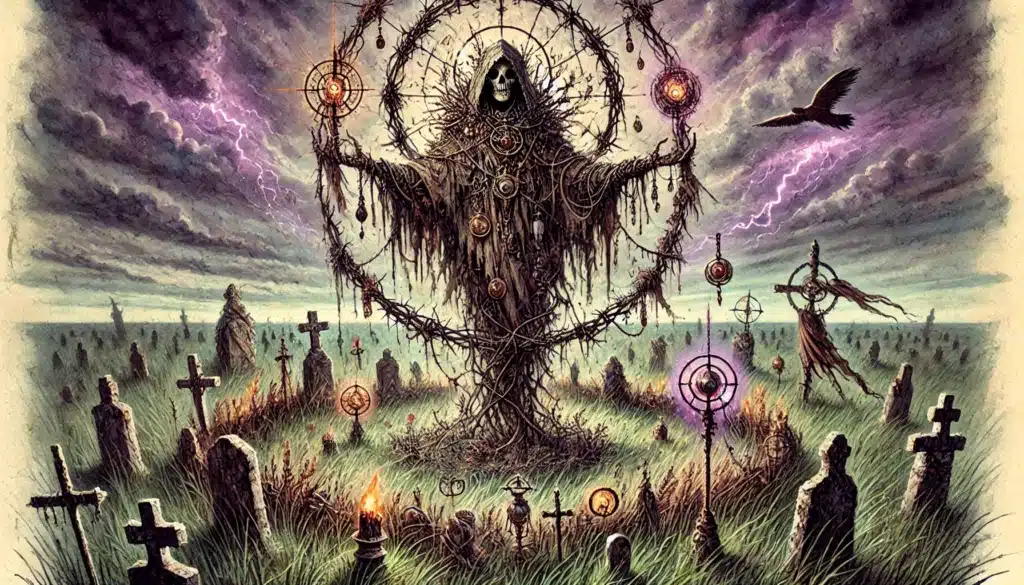
Final Thoughts on Monster Creation
Crafting a custom monster is equal parts art, science, and chaos—a wild mix that, at its best, delivers moments of wonder and terror no published stat block can match. With each new foe, you’re not just filling out a page of stats, but conjuring something the world has never seen before. That’s a privilege and a delight unique to Dungeon Masters and worldbuilders.
The monsters that truly endure in memory are those with flavor and function locked into a single identity. They challenge the party’s tactics and spark their creativity, yet also leave scars and echoes in the story. Don’t chase perfection; chase impact. An imperfect, but evocative, monster can produce more drama and laughter than the most balanced design.
Be bold. Let instinct lead you. If you have a vision—an image, a mood, a chilling power—follow it and build outward. Refine when necessary; playtest, adjust, and accept feedback with a spirit of curiosity rather than caution. Every outing at the table is a chance to hone your technique.
Monster-making is an endless experiment, but one that yields magic at every step. There is no greater reward than watching your friends cower in delight, cheer after a hard-fought win, or launch wild theories about the beast behind the veil.
Remember, the best monsters aren’t just obstacles; they inspire, frighten, and immerse players in a living world. With creativity, care, and a pinch of audacity, your next homebrew creature might just be the stuff of legend at your table. Happy designing!

